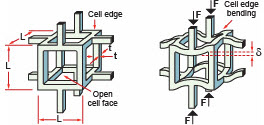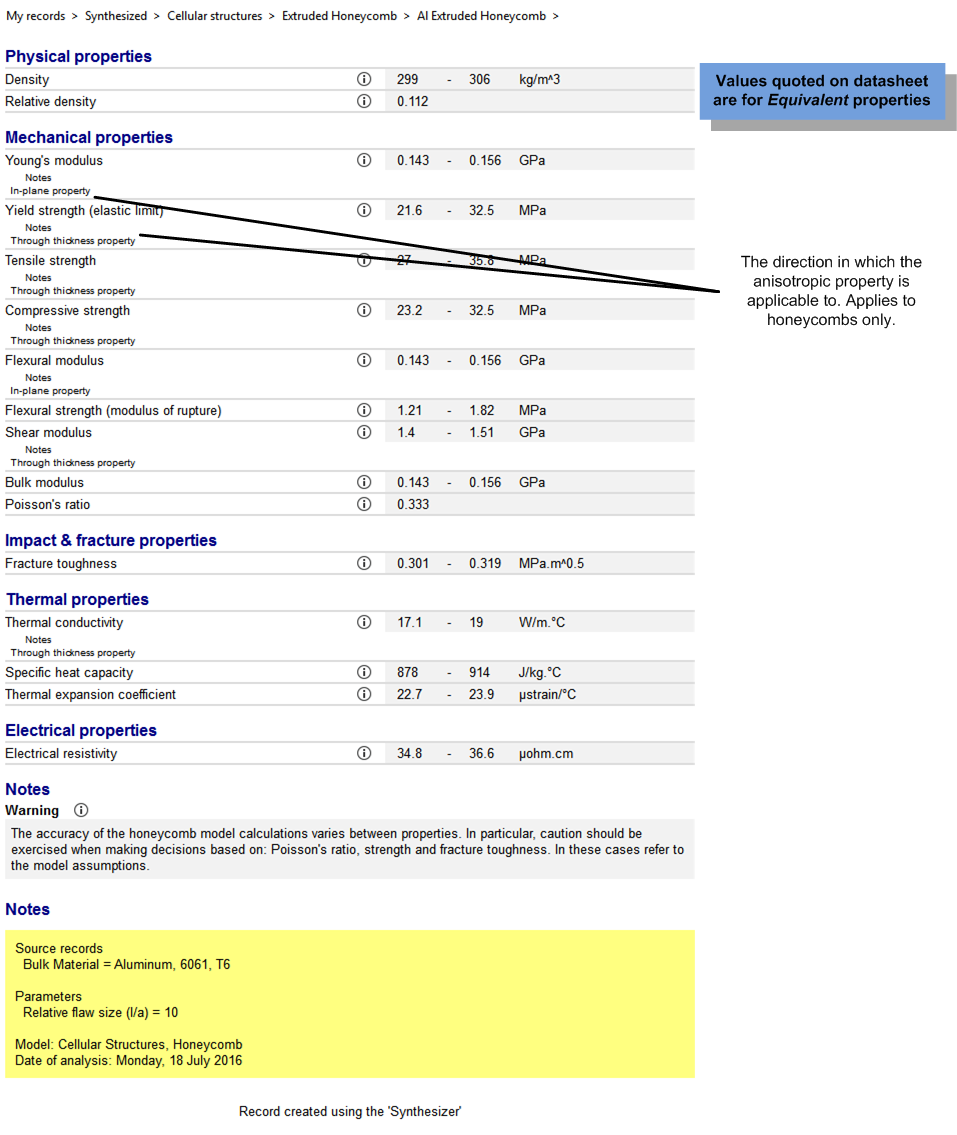
Cellular Structures are hybrids of a solid and a gas. The Cellular Structures model predicts the performance of three main types of cellular solid: foams (open-cell and closed-cell), honeycombs (extruded and expanded), and triangulated lattices. These can either be used on their own or integrated into sandwich panels as a core material, where they are frequently used to reduce weight or increase thermal insulation characteristics.
Foams are made by expanding polymers, metals, ceramics or glasses with a foaming agent - a generic term for introducing a gas. An idealized unit cell for an open-celled low-density foam is shown below. It has solid cell edges surrounding a void containing a gas or fluid. In closed-cell foams, continuous cell walls form between the cell edges. When a load is applied to a foam, the cell walls bend.
When a load is applied to a triangulated lattice structure, the cell edges stretch instead of bend, resulting in a stiffer and stronger structure than equivalent foams of the same density. A triangulated lattice structure and its unit cell are shown below. Lattice structures are generally more difficult to manufacture than foams. On a large scale (strut length = meters) they are manufactured by assembling individual struts. On a smaller scale, they can be produced by casting or additive manufacturing.
Honeycombs are anisotropic and therefore the properties are dependent on the direction, generally either through-thickness or in-plane. For expanded honeycombs (where a third of the cell faces have double thickness), there is an additional degree of anisotropy within the plane. The through-thickness properties are generally of more interest as they are the important ones when honeycombs are used as core material for a sandwich panel. The in-plane mechanical properties tend to be bending-dominated while the through-thickness properties are stretch-dominated.
Click on Synthesizer on the
main toolbar and under ![]() Cellular Structures,
click on the required model type:
Cellular Structures,
click on the required model type:
For Honeycombs, in the Honeycomb Type list, select Extruded or Expanded.
To select a Bulk Material, click . This displays the full MaterialUniverse tree for the active database. Browse the tree, highlight the material of interest and click .
Specify the Relative Density for the cellular structure. This can be entered as either:
When a range is specified, the number of relative densities also needs to be specified in the Number of values box.
Specifying a list or range enables a family of foams or lattices to be evaluated.
Note: Some of the equations used assume that the cell edge thickness is much less than the cell size, and hence are only valid up to a relative density of approximately 30%.
In the Relative flaw size (l/a) box, type a value, where l = average cell size and a = maximum flaw size in the bulk material. The default value is 10. This parameter is used to calculate the fracture toughness of the material.
For closed-cell foams, in the Proportion of material in the cell faces, (1-φ) box, type a percentage. This specifies the relative percentage of the bulk material in the cell faces (φ giving the proportion in the cell walls). It defaults to a typical value of 20%. As with the relative density variable, a single value, list or range can be entered.
For closed-cell foams, in the Thermal conductivity of gas in cells box, type a value (current units are shown to the right of the box).
In the Bulk Material box, type the abbreviated name. For example, if your source record is Aluminum, type Al. This is used to create the record names for the new cellular materials.
The synthesized records can be plotted on a chart for easy comparison with existing materials in the database.
